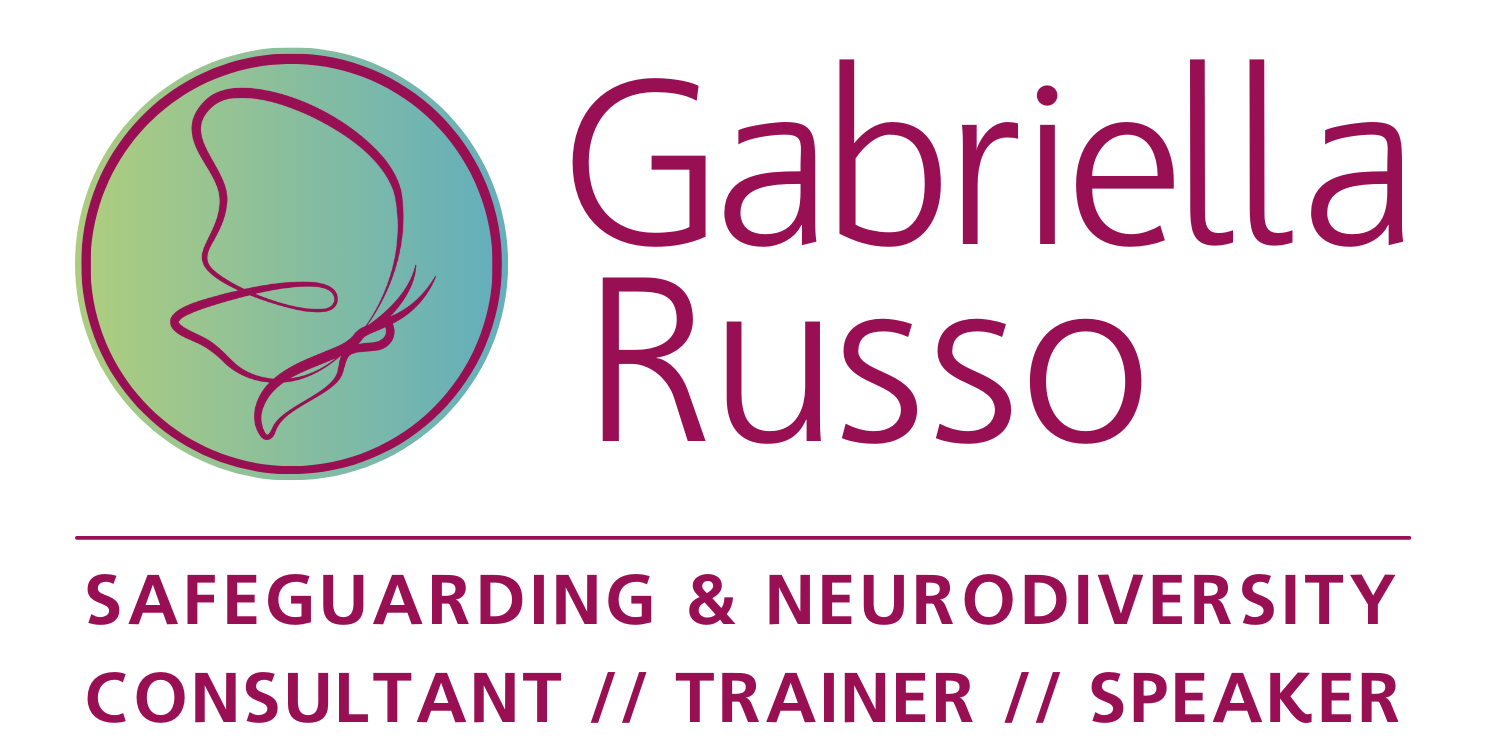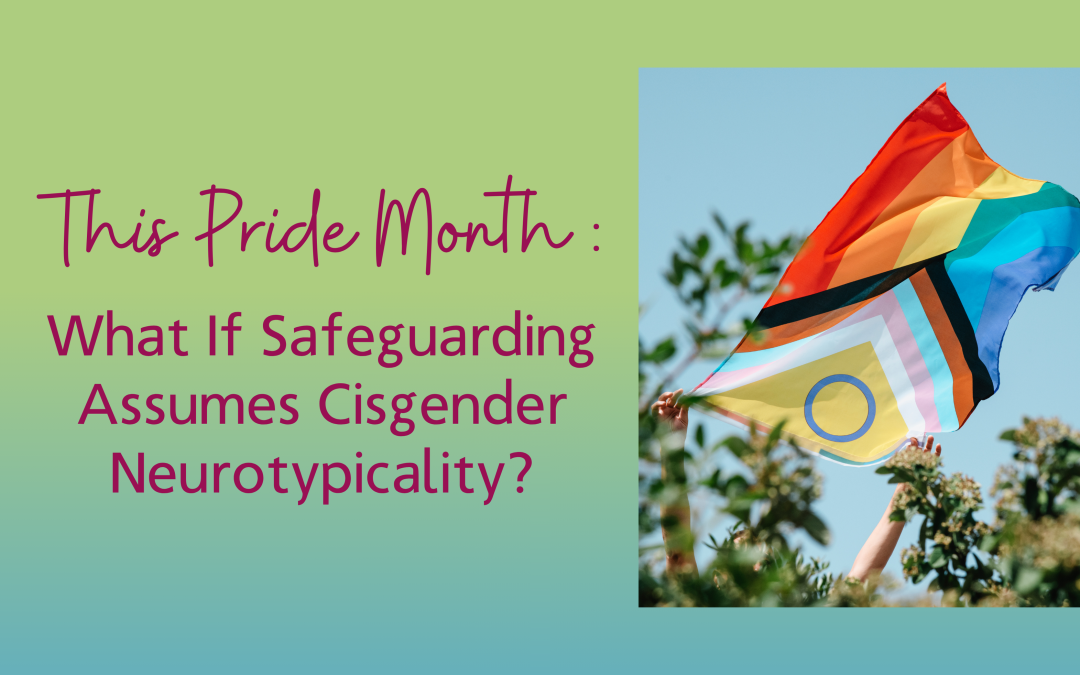The Hidden Crisis at the Intersection of Identity
This Pride Month, as we celebrate diversity in all its forms, it’s time to confront an uncomfortable truth that my 30 years in safeguarding has made impossible to ignore: our frameworks are systemically failing people who exist at the intersection of LGBTQIA+ and neurodivergent identities – and anyone who doesn’t fit the assumed narrow profile of cisgender neurotypicality.
The Scale of the Issue
The numbers tell a story that demands immediate attention. The 2021 UK Census revealed that 3.2% of the population identifies as LGB+, with an additional 0.54% identifying as transgender – meaning that approximately 4% of the UK population identifies as LGBTQIA+ (though this likely underestimates the true figure as some fear being open about this, and the Census excludes under-16’s). Meanwhile, it’s estimated that between 15 and 20% of the population is neurodivergent in some way. But here’s where it gets critical – a recent Cambridge University study found autistic people might be three times more likely to identify as trans, while another study found neurodivergent individuals were eight times as likely to be asexual.
This isn’t just academic interest – this intersectionality creates profound vulnerabilities. LGBTQIA+ youth who are diagnosed as autistic had over 50% greater odds of attempting suicide in the past year compared to those who had never been diagnosed as autistic. Among LGBTQIA+ youth specifically, 5% have been diagnosed as autistic, while an additional 35% suspect they may be autistic. International research suggests similar patterns for ADHD, with one study finding 61% of ADHD participants reported LGBTQIA+ sexual orientations – highlighting how widespread these intersections really are.
The Assumption Problem
Consider these scenarios I’ve witnessed repeatedly:
- A trans young person withdrawing from activities being labelled as ‘secretive’ instead of recognising that they might be navigating safety in an environment that doesn’t recognise their identity.
- A neurodivergent child’s stimming or direct communication style being flagged as ‘concerning behaviour’ rather than natural neurodivergent expression.
- Gender-diverse individuals facing barriers to disclosure because intake forms and processes assume binary identities.
- Autistic people’s need for routine and predictability being misread as ‘controlling behaviour’.
The Heathcare Barrier
One third of respondents to a 2018 study said their gender identity had been repeatedly questioned due to them being autisitc. This represents a fundamental barrier to both gender-affirming care and neurodivergent support. Being neurodivergent remains a huge barrier to many people receiving the gender-affirming health care they need.
The Recognition Gap
Some queer individuals with hidden neurodivergent identities may have gone undiagnosed due to the social stigma surrounding the LGBTQIA+ community. When professionals are looking for one ‘issue’, they often miss the other, leaving individuals without the comprehensive support they need.
The Real World Impact
Educational Settings
If LGBTQIA+ young people are unable to get information about sex and relationships from school or family, they might seek advice and support from people in adult spaces, such as from people in online communities and forums. While these may be helpful, they are unregulated and pose potential risks. For neurodivergent LGBTQIA+ youth, this risk is compounded by communication differences and potential difficulties recognising manipulation or coercion.
Employment and Independence
The intersection creates economic vulnerability too. Just 29% of autistic people are in some kind of employment (full, part-time or zero-hours contracts), even though the vast majority want to work and are capable of doing so. When you add LGBTQIA+ discrimination, the barriers multiply exponentially.
Mental Health Crisis
While UK-specific interesectional data is not yet available, US research from The Trevor Project shows that young people who suspect that thay may be autistic reported higher rates of anxiety (79%) and depression (71%) compared to both young people who have an autism diagnosis and those who are not autistic. This suggests that unrecognised neurodivergence in LGBTQIA+ youth may be creating addtional trauma – a pattern that requires urgent UK research and attention.
Why Current Systems Miss The Mark
Misinterpreting Behaviour
In their guidance on ‘Safeguarding LGBTQ+ Children and Young People’, The NSPCC state that adults around a child can sometimes assume that it’s normal for LGBTQIA+ young people to have sex at a younger age as part of exploring their identity. This means that adults might not consider a young person being involved in underage sexual activity as a sign of possible abuse. For neurodivergent LGBTQIA+ young people, this dangerous assumption is compounded by potential difficulties in understanding consent or recognising exploitation.
The Masking Problem
Neurodivergent people can often feel as though they need to supress natural behaviours, conform to social norms and force themselves to behave ‘typically’. This is known as masking, and the exhaustion and mental health impact is hugely significant. When someone is masking both neurodivergence and gender/sexuality identity, these impacts increase exponentially.
Intersectional Invisibility
There is little research examining the ways in which intersectional minoritised identities may compound harm in LGBTQIA+ health inequality. Our safeguarding systems suffer from this same blind-spot – they’re designed for single-identity challenges, not complex intersectional realities.
The Cost Of Getting It Wrong
When our ‘warning signs’ are based on neurotypical, cisgender norms, we’re not just missing risks – we’re actively creating harm. We’re telling people that their authentic selves are suspicious. I’ve worked with organisations where staff genuinely wanted to help, but their training taught them to see difference as danger.
Both neurodivergent and LGBTQIA+ people have to effectively ‘come out’ as neurodivergent or LGBTQIA+, not just once, but constantly to new people. Both can cause huge levels of fear or shame. When safeguarding systems add to this burden by treating identity markers as warning signs, we compound the very trauma we’re meant to prevent.
Building Truly Inclusive Safeguarding
Understanding Intersectionality
When you’re working with a child, consider all the factors that might influence their safety and wellbeing. Take the time to get to know them, understand their lived experience and how they might face risks due to how others might perceive their identity.
This isn’t about political correctness – it’s about effectiveness. If our safeuarding systems don’t work for neurodivergent and gender-diverse people, they’re not working at all.
Practical Steps Forward
- Reframe ‘Warning Signs’ – What we call concerning behaviour might be natural neurodivergent expression or safety-seeking behaviour from someone whose identity isn’t accepted.
- Inclusive Intake Processes – Design forms and initial conversations that don’t assume gender and sexuality binaries or neurotypical communication styles.
- Intersectional Risk Assessment – Understand how multiple marginalised identites compouind vulnerability.
- Staff Training on Neurodiversity – Train staff to distinguish between neurodivergent traits and genuine safeguarding concerns, and to understand how trauma presents differently in neurodivergent individuals.
- Safe Disclosure Environments – You should only share information about a child or young person’s sexuality or gender identity if they give you permission, or if it’s relevant to a child protection concern.
- Ongoing Review and Feedback – Regularly evaluate safeguarding policies with input from LGBTQIA+ and neurodivergent communities to ensure they remain effective and inclusive.
Moving Forward
The solution isn’t to lower standards or ignore genuine concerns. It is to build frameworks that understand human diversity from the ground up. To train our teams to see beyond surface behaviours to underlying needs. To create spaces where being different doesn’t make you suspicious.
We need safeguarding approaches that recognise:
- Communication differences aren’t deception.
- Gender expression that doesn’t fit traditional expectations isn’t concerning behaviour.
- Masking exhaustion isn’t non-compliance.
- Seeking identity-affirming spaces isn’t risk-taking behaviour, but young people need access to safe, age-appropriate spaces.
The Bottom Line
Safeguarding should mean safety for everyone – not just those who fit stereotypical norms. When we build systems around the myth of ‘normal’, we abandon the very people who need protection the most.
As we celebrate Pride Month, let’s commit to safeguarding frameworks that truly see and support all the people in our care. Because when difference is pathologised, everyone loses – and some people pay with their lives.
A question for you to consider : How are you ensuring your safeguarding approaches truly see and support all the people in your care? The time for inclusive safeguarding isn’t coming – it’s here, and it’s urgent.

